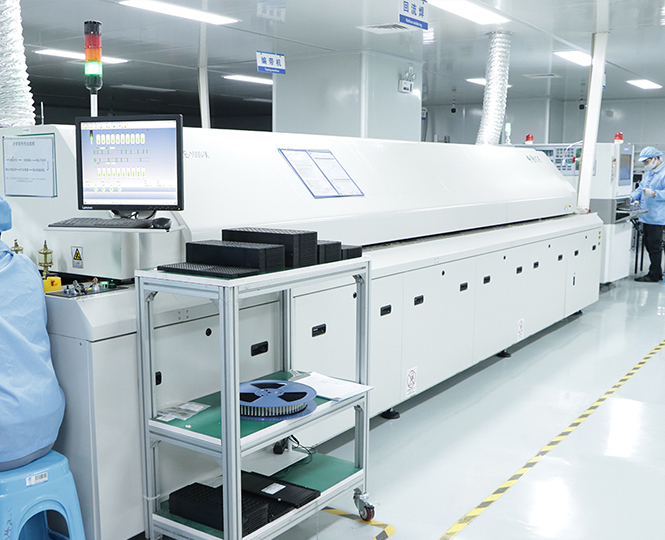What is SMT reflow soldering?

SMT reflow soldering is the mainstream soldering technology in PCB assembly, and it plays a crucial role in the soldering process of electronic components.
SMT reflow soldering is a process that uses heat to solder electronic components to a printed circuit board (PCB). Specifically, SMT reflow soldering involves applying solder paste to the surface of the electronic components and PCB, then placing them in a reflow oven for heating. The solder paste is melted and the electronic components and PCB are soldered together during the heating process. The temperature and time in the reflow oven must be precisely controlled during the soldering process to ensure the stability and reliability of the soldering quality.
The advantages of SMT reflow soldering are very obvious. Firstly, compared with traditional through-hole soldering technology (wave soldering), SMT reflow soldering can greatly reduce the size and weight of components, thereby improving the integration and reliability of products. Secondly, SMT reflow soldering can improve the soldering efficiency of electronic components, shorten the production cycle, and reduce production costs. In addition, SMT reflow soldering can also reduce electromagnetic interference and noise during the soldering process, improving the anti-interference ability of products.
However, SMT reflow soldering also has some issues and challenges. For example, the control of soldering temperature and time is crucial, and improper control can lead to unstable soldering quality. In addition, the selection and use of solder paste also affect the soldering quality and reliability. Therefore, electronic manufacturing companies must master the core technology of SMT reflow soldering, continuously improve and optimize the process, to improve the quality and competitiveness of products.
In conclusion, SMT reflow soldering is one of the indispensable processes in the electronic manufacturing industry. It can improve the integration, reliability, and production efficiency of products, but it also requires mastering core technologies, such as the control of furnace temperature and time, to ensure soldering quality and reliability.

